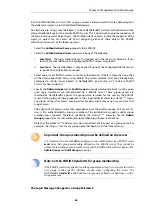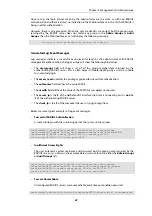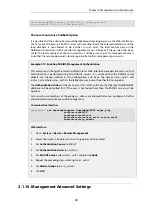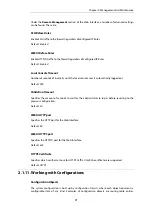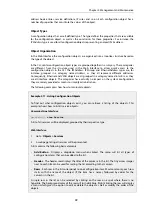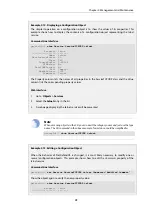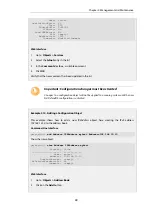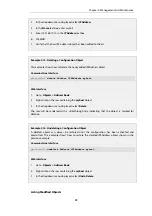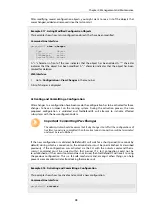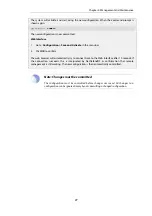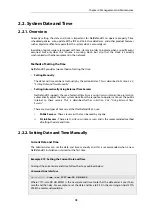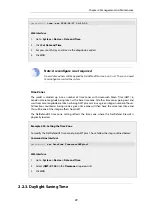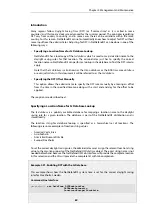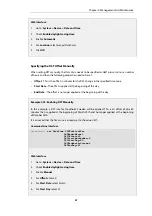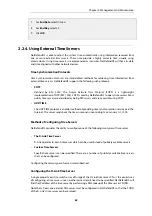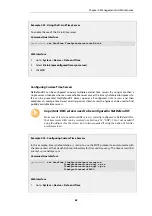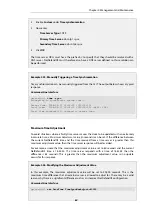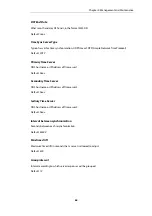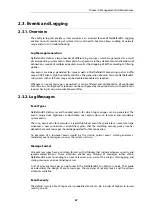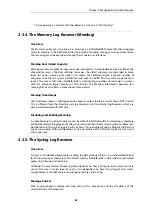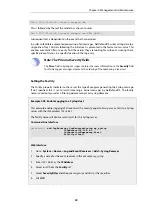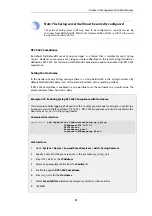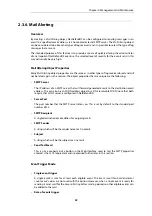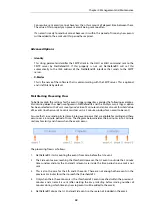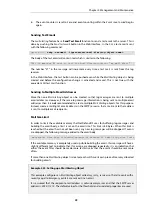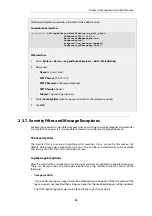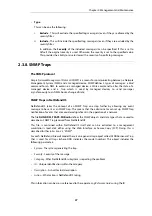
7.
For End Date select
October
8.
For End Day select
25
9.
Click OK
2.2.4. Using External Time Servers
NetDefendOS is able to adjust the system time automatically using information received from
one or more external
time servers
. These time provide a highly accurate time, usually using
atomic clocks. Using time servers is recommended as it ensures NetDefendOS will have its date
and time aligned with other network devices.
Time Synchronization Protocols
Time Synchronization Protocols
are standardized methods for retrieving time information from
external time servers. NetDefendOS supports the following such protocols:
•
SNTP
Defined by RFC 2030, The
Simple Network Time Protocol
(SNTP) is a lightweight
implementation of NTP (RFC 1305). SNTP is used by NetDefendOS to query time servers. Most
public time servers are described as being
NTP servers
and are accessible using SNTP.
•
UDP/TIME
The
UDP/TIME
protocol is an older method of providing time synchronization service over the
Internet. The server sends back the time in seconds since midnight on January 1st, 1900.
Methods of Configuring Time Servers
NetDefendOS provides the ability to configure one of the following two types of time server:
•
The D-Link Time Server
D-Link operates its own time server which can be used instead of publicly available servers.
•
Custom Time Servers
Specific time servers can be specified. There are a number of publicly available time servers
that can be configured.
Configuring these two types of server is described next.
Configuring the D-Link Time Server
A single property exists to switch on or off usage of the D-Link time server. This is the easiest way
of configuring a time server since no other server details need to be specified. NetDefendOS will
find the IP address of the time server by performing a DNS lookup of the time server's FQDN.
Note that at least one external DNS server must be configured in NetDefendOS so that the FQDN
of the D-Link's time server can be resolved.
Chapter 2: Management and Maintenance
82
Содержание NetDefendOS
Страница 30: ...Figure 1 3 Packet Flow Schematic Part III Chapter 1 NetDefendOS Overview 30 ...
Страница 32: ...Chapter 1 NetDefendOS Overview 32 ...
Страница 144: ...Chapter 2 Management and Maintenance 144 ...
Страница 220: ... Enable DHCP passthrough Enable L2 passthrough for non IP protocols 4 Click OK Chapter 3 Fundamentals 220 ...
Страница 267: ... SourceNetwork lannet DestinationInterface any DestinationNetwork all nets 4 Click OK Chapter 3 Fundamentals 267 ...
Страница 284: ...Chapter 3 Fundamentals 284 ...
Страница 360: ...The ospf command options are fully described in the separate NetDefendOS CLI Reference Guide Chapter 4 Routing 360 ...
Страница 392: ...Chapter 4 Routing 392 ...
Страница 396: ...Web Interface 1 Go to Network Ethernet If1 2 Select Enable DHCP 3 Click OK Chapter 5 DHCP Services 396 ...
Страница 419: ... Host 2001 DB8 1 MAC 00 90 12 13 14 15 5 Click OK Chapter 5 DHCP Services 419 ...
Страница 420: ...Chapter 5 DHCP Services 420 ...
Страница 424: ...2 Now enter Name lan_Access Action Expect Interface lan Network lannet 3 Click OK Chapter 6 Security Mechanisms 424 ...
Страница 573: ...Chapter 6 Security Mechanisms 573 ...
Страница 575: ...This section describes and provides examples of configuring NAT and SAT rules Chapter 7 Address Translation 575 ...
Страница 607: ...Chapter 7 Address Translation 607 ...
Страница 666: ...Chapter 8 User Authentication 666 ...
Страница 775: ...Chapter 9 VPN 775 ...
Страница 819: ...Chapter 10 Traffic Management 819 ...
Страница 842: ...Chapter 11 High Availability 842 ...
Страница 866: ...Default Enabled Chapter 13 Advanced Settings 866 ...
Страница 879: ...Chapter 13 Advanced Settings 879 ...

